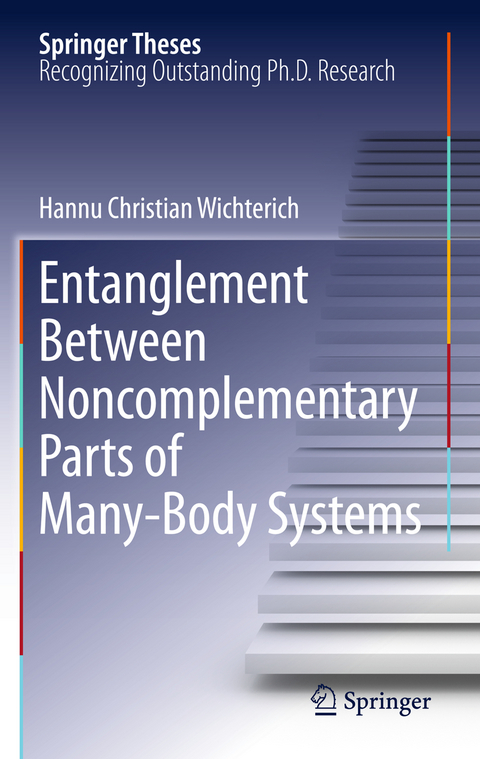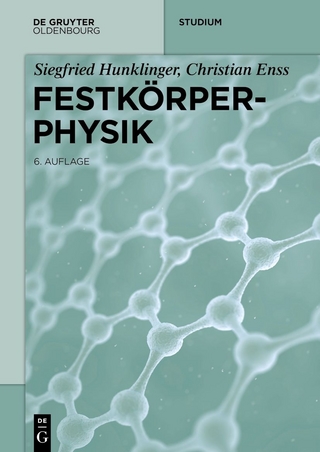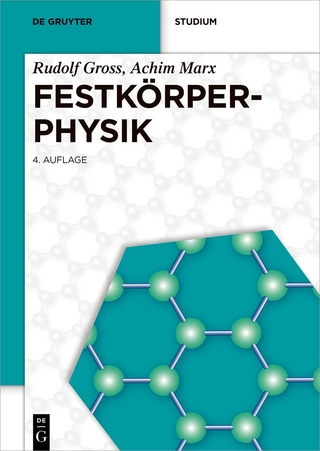
Entanglement Between Noncomplementary Parts of Many-Body Systems
Springer Berlin (Verlag)
978-3-642-26829-8 (ISBN)
This thesis investigates the structure and behaviour of entanglement, the purely quantum mechanical part of correlations, in many-body systems, employing both numerical and analytical techniques at the interface of condensed matter theory and quantum information theory. Entanglement can be seen as a precious resource which, for example, enables the noiseless and instant transmission of quantum information, provided the communicating parties share a sufficient "amount" of it. Furthermore, measures of entanglement of a quantum mechanical state are perceived as useful probes of collective properties of many-body systems. For instance, certain measures are capable of detecting and classifying ground-state phases and, particularly, transition (or critical) points separating such phases. Chapters 2 and 3 focus on entanglement in many-body systems and its use as a potential resource for communication protocols. They address the questions of how a substantial amount of entanglement can be established between distant subsystems, and how efficiently this entanglement could be "harvested" by way of measurements. The subsequent chapters 4 and 5 are devoted to universality of entanglement between large collections of particles undergoing a quantum phase transition, where, despite the enormous complexity of these systems, collective properties including entanglement no longer depend crucially on the microscopic details.
Introduction.- Exploiting Quench Dynamics in Spin Chains for Distant Entanglement and Quantum Communication.- Extraction of Pure Entangled States from Many-Body Systems by Distant Local Projections.- Scaling of Negativity of Separating Blocks in Spin Chains and Critically.-Universality of the Negativity in the Lipkin-Mechkov-Glick Model.- Conclusions and Outlook.- A. Diagonalisation of the XX Model.- B. Factorisation of the Fermionic Correlation Functions.- C. Time Dependence of the Reduced Density Operator Following Quench.- D. Density Matrix Renormalisation Group Algorithm.- E. Proof of Williamson's Theorem.- F. Partial Transposition in Continuous Variable Systems.- G. Gaussian Wigner Representation of Bosonic Vacuum.- H. Ground State Covariance Matrix of a Quadtratic Hamiltonean.- I. Bipartitie Entanglement of Gaussian States.- J. Density Matrix Spectra of Bosonic Gaussian States.- K. Bosonisation of the LMG Hamiltonian.- Bibliography
From the reviews:
"The theses brings new and very interesting knowledge on the quantum information field. ... this thesis gives a new insight of entanglement between noncomplementary regious of many-body systems, with interesting discussions and well carried out mathematical models." (Nicolae Constantinescu, Zentralblatt MATH, Vol. 1222, 2011)| Erscheint lt. Verlag | 15.7.2013 |
|---|---|
| Reihe/Serie | Springer Theses |
| Zusatzinfo | XII, 116 p. |
| Verlagsort | Berlin |
| Sprache | englisch |
| Maße | 155 x 235 mm |
| Gewicht | 206 g |
| Themenwelt | Naturwissenschaften ► Physik / Astronomie ► Festkörperphysik |
| Naturwissenschaften ► Physik / Astronomie ► Quantenphysik | |
| Naturwissenschaften ► Physik / Astronomie ► Theoretische Physik | |
| Technik ► Elektrotechnik / Energietechnik | |
| Technik ► Maschinenbau | |
| Schlagworte | Density matrix renormalization group • Emergent properties thesis • Entanglement thesis • Mixed state entanglement • Prize winning physics thesis • Prize winning thesis • quantum phase transitions • Quantum quench • Quantum spin chains |
| ISBN-10 | 3-642-26829-3 / 3642268293 |
| ISBN-13 | 978-3-642-26829-8 / 9783642268298 |
| Zustand | Neuware |
| Haben Sie eine Frage zum Produkt? |
aus dem Bereich


